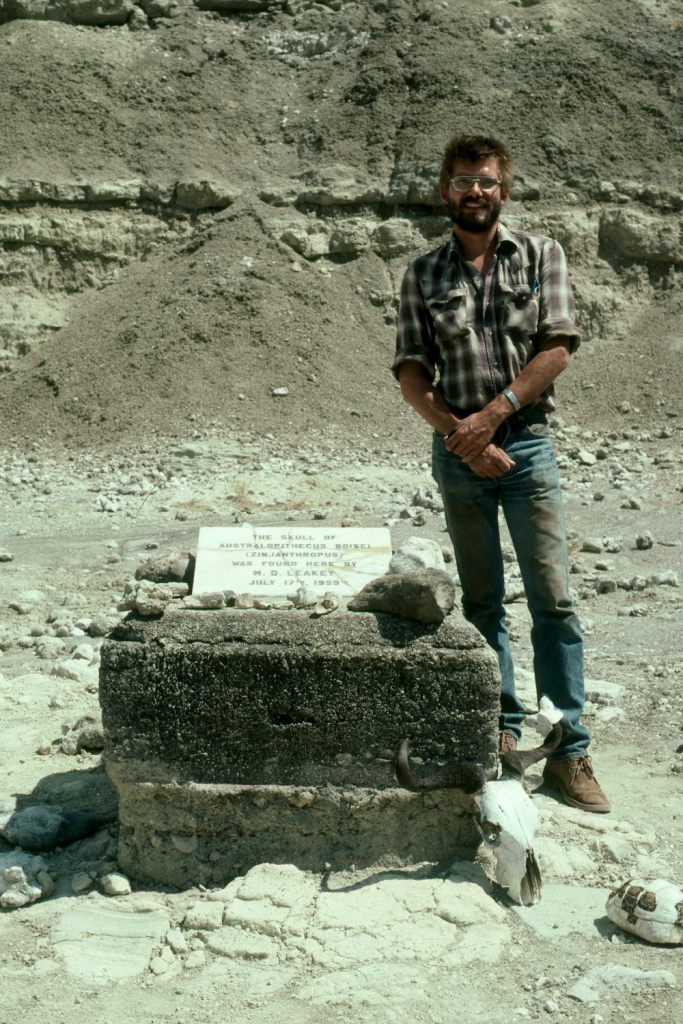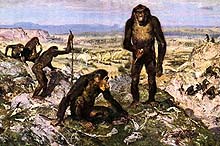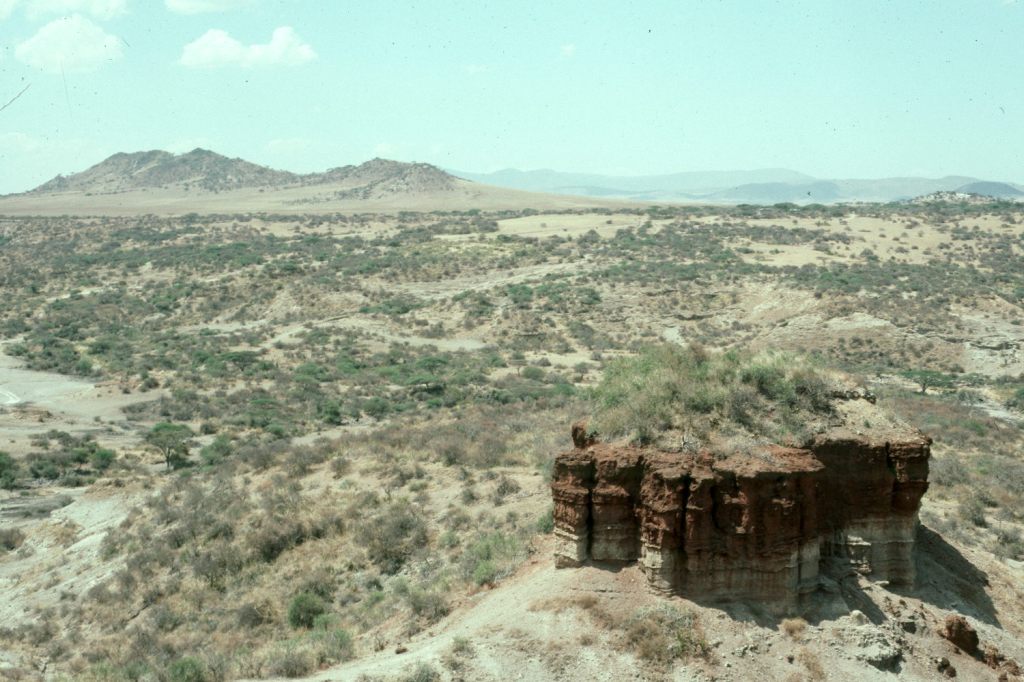In Chapter 3 of Eric Cline’s From Eden to Exile, the author discusses those two biblical cities synonymous with decadence and debauchery: Sodom and Gomorrah. Again, the biblical story is well known to most readers of this blog and does not bear repeating. Interestingly, what is not well known by the public, is that though the supposed sinfulness of the cities’ occupants is given in casual conversation, apparently, according to Cline, there are “…few details in the original story about what specifically went on in Sodom and Gomorrah” (p. 40). More importantly, the bible apparently gives no just cause for God’s wrath against the towns:
In Genesis itself, there is only a brief mention of an attempt by some men of Sodom to have sex with three guests-actually angels in disguise-who were visiting Lot (19:1-11). The men’s attempt obviously goes against the biblical custom of treating strangers as honored guests, but this is hardly sufficient reason for God to destroy both towns (p. 40).
There is further mention of Sodom’s pride and idleness in the later Book of Ezekiel, but again such a transgression seems hardly worthy of complete annihilation. (Then again, the entire Old Testament serves as a tribute to a god whose primary characteristic appears to be the wanton disrespect for the “sanctity of life”. This seems to me a major contradiction between the literal translation of the bible and today’s political activism of its followers. I have always wondered, often aloud in front of “pro-life” activists referring constantly to God’s overriding concern for the “innocence” of the unborn, how many pregnant women were at Sodom and Gomorrah?).
It is not until the Book of Jude, in the New Testament, written sometime after the Apostles, that reference is made to the “sexual immorality and pursued unnatural lust” that our modern day perception of Sodom and Gomorrah’s citizenry is duly painted. Talk about your post-hoc accommodating argument!
While Cline’s reference to the search for the archaeological Sodom and Gomorrah remains the substance of the chapter, I found his discussion of the post-dated justification for God’s wrath against the cities the more interesting part. I teach a section on archaeological interpretation and historical texts in my Introduction to Archaeology class at Lassen College, primarily using biblical texts as an example (I open the class talking about Schliemann and the Iliad, so parts of that issue are brought in as well). One of the first things I ask students to discuss is the simple question of “Why do people write texts?” The initial response is “to record observations” but they also get around to other reasons: moral teaching, political empowerment, establishing historical credentials, justifying political or social hierarchies, etc. The obvious conclusion is then reached: “historical” texts may be written for a variety of purposes other than recording history. It would seem the story of Sodom and Gomorrah (as well as that of Noah and the Flood) illustrates creative, retroactive explanations applied to biblical texts centuries after the events spawning the story took ever place.
Cline’s immediate issue is deriving possible locations of the two cities from geographic references in the bible. There are few – and none without interpretive problems. Later writers, Cline notes, such as Flavius Josephus and Tacitus, although they discuss the geography of the area with respect to Sodom and Gomorrah, make observations “…that are mere speculation, and must be considered with caution, if at all”. (p. 44).
Cline discusses the various research efforts to establish the location of these ancient cities archaeologically. Although the efforts are fraught with problems of interpretation, and no locations match the limited biblical references precisely, the best searches are conducted by professional archaeologists from accredited universities. Other, archaeological “quacks” (my term, not Cline’s) such as Ron Wyatt and Michael Sanders, claim to have discovered likely locations for Sodom and Gomorrah, but none of their “evidence” stands up to minimal scrutiny. Cline describes Wyatt as the “nurse anesthetist and amateur archaeologist” – my apologies to Eric, but I must protest the term “amateur” archaeologist; there can be no such thing as an amateur archaeologist, anymore than there can be an amateur surgeon or amateur nuclear physicist. Wyatt’s work is described as “junk science” by professionals in the field – he has misinterpreted lake sediments as the remains of ancient cities much as Cornuke and his BASE team misinterpreted basalt formations as slabs of wood. Sanders’ work was similarly “…ignored by both archaeologists and geologists for the same reasons that Wyatt’s claims have been disregarded” (p.52).
There are others, however, whom Cline notes “have more serious credentials” who have gone in search of the two cities. The discoveries have generally revealed cities falling as a result of natural catastrophes (volcanism, earthquakes, etc.) that may have been the source of the Sodom and Gomorrah tale. What better explanation for significant destruction and loss of human life to a primitive Bronze Age people, unfamiliar with the vagaries of plate tectonics, than the “hand of god”?
Cline reminds us that the search for Sodom and Gomorrah is reflective of the larger investigation into the existence of Abraham and the Patriarchs. The solution to this problem is not conclusively derived from efforts to wed archaeology with historical texts. If anything, the archaeology of the issue poses far more problems than it solves. It is not at all clear that an Abraham (or Abraham-like character – the existence of Abraham as an individual is itself questioned by scholars) could have witnessed the destruction of Sodom and Gomorrah as indicated by the bible. Some scholars are cautious regarding taking too much of the story verbatim:
…sometimes a story is just a story, a literary creation in which the events described have little or no connection to the real world (p.57).
Others suggest the story may have come from a Canaanite tradition, both pre-Israelite and non-Israelite in origin. In effect, it is a fable or possible memory of a past event that the biblical writers morphed into an ethical story (another “retroactive” explanation turned to good use for the time). Although Cline discusses multiple possibilities and lines of evidence, he returns time and again to the idea that the story of Sodom and Gomorrah appears best explained as another oral tradition eventually written down, but incorporating individuals, events and moral teachings far removed from the facts of the original event. In the end, he quotes Neil Asher Silberman regarding the search for Sodom and Gomorrah:
This is Noah’s Ark stuff. The real challenge for biblical archaeologists today is not to search for long-lost cities, but to understand why the ancient Israelites formulated these powerful myths.






Leave a comment